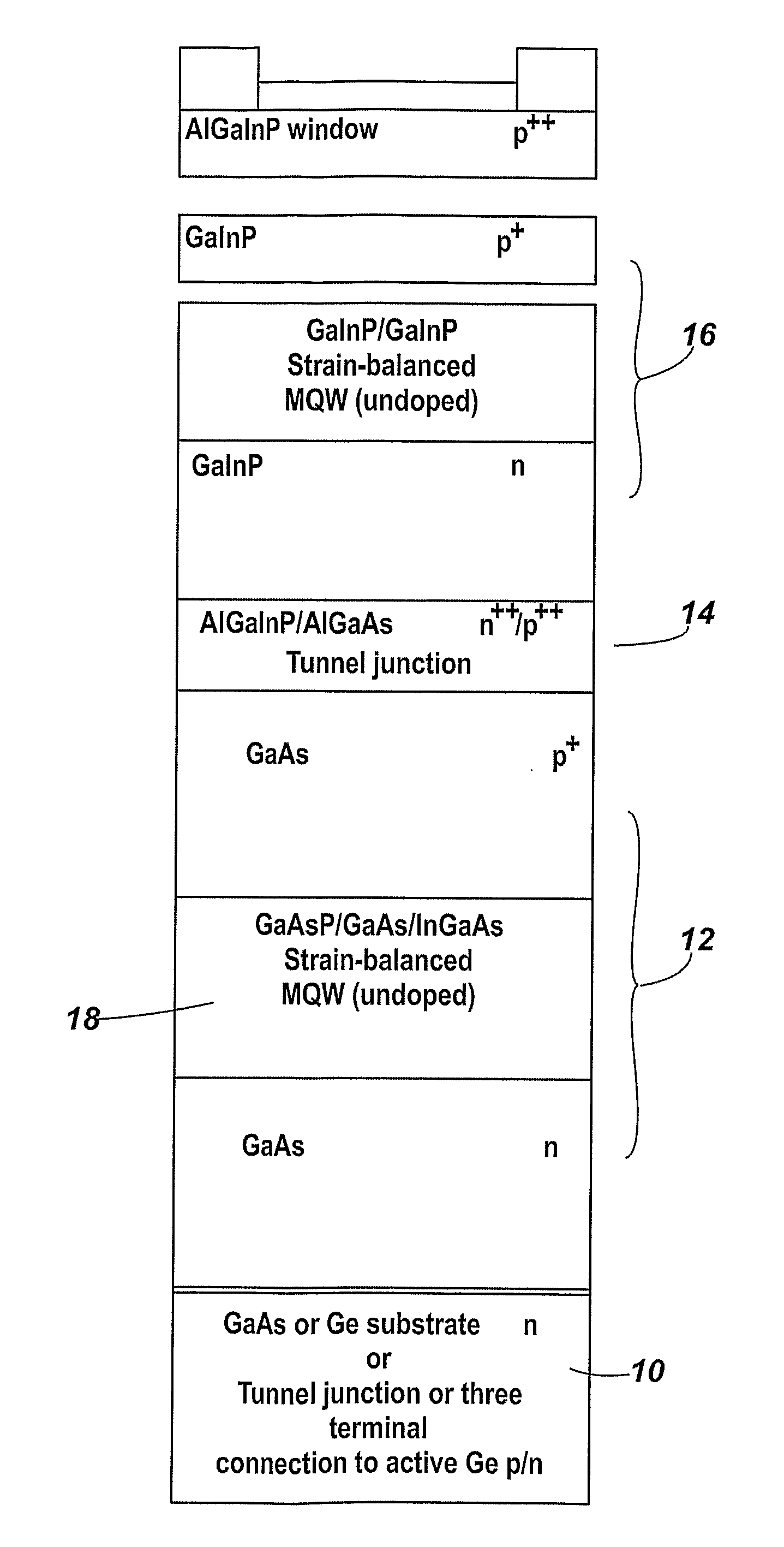Photovoltaic cell
a photovoltaic cell and photovoltaic junction technology, applied in the field of photovoltaic junctions, can solve the problems of large loss of potential electrical power of shorter wavelength photons, limited devices, and low gainp
- Summary
- Abstract
- Description
- Claims
- Application Information
AI Technical Summary
Benefits of technology
Problems solved by technology
Method used
Image
Examples
first embodiment
[0046]Referring now to FIG. 3, the structure of a solar cell according to the invention is shown schematically. Not all layers are necessarily shown in the diagram. Broadly, the cell comprises a substrate 20 on which is formed a lower photovoltaic junction 22. A tunnel junction 24 is formed on top of the lower junction 22, and an upper photovoltaic junction 26 is formed on the tunnel junction 24. Structures overlying the upper photovoltaic junction may include a window layer 28, and electrodes 30 will typically be provided on the window layer and underneath the substrate. The solar cell is operated by providing illumination 32, typically concentrated solar illumination, at the top of the cell, and drawing the generated electrical power by connections to the electrodes 30. The upper photovoltaic junction absorbs incident photons having an energy higher than a band edge of the junction. Photons of lower energy pass through to the lower junction which has a lower energy band edge. Sinc...
second embodiment
[0049]The choice of other materials in the solar cell will depend on various factors and constraints, and a particular detailed example is given below in the Typically, the substrate may be of GaAs or Germanium, and the lower photovoltaic junction may be a GaAs based junction. In particular the lower junction may be a p-i-n junction and have bulk semiconductor regions formed of GaAs. The intrinsic region of the lower junction may itself contain quantum wells, for example to extend the band edge of the junction to longer wavelengths. These wells and surrounding barriers may be stress or strain balanced in ways discussed in the prior art and elsewhere in this document, for example to enable the band edge of the intrinsic region to be extended to longer wavelengths. This is may be important for the device to make better use of the available spectrum of incident light. There may be other photovoltaic junctions in the device, between, above or below the lower and upper junctions, and / or...
PUM
 Login to View More
Login to View More Abstract
Description
Claims
Application Information
 Login to View More
Login to View More - R&D
- Intellectual Property
- Life Sciences
- Materials
- Tech Scout
- Unparalleled Data Quality
- Higher Quality Content
- 60% Fewer Hallucinations
Browse by: Latest US Patents, China's latest patents, Technical Efficacy Thesaurus, Application Domain, Technology Topic, Popular Technical Reports.
© 2025 PatSnap. All rights reserved.Legal|Privacy policy|Modern Slavery Act Transparency Statement|Sitemap|About US| Contact US: help@patsnap.com



